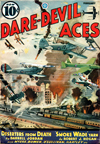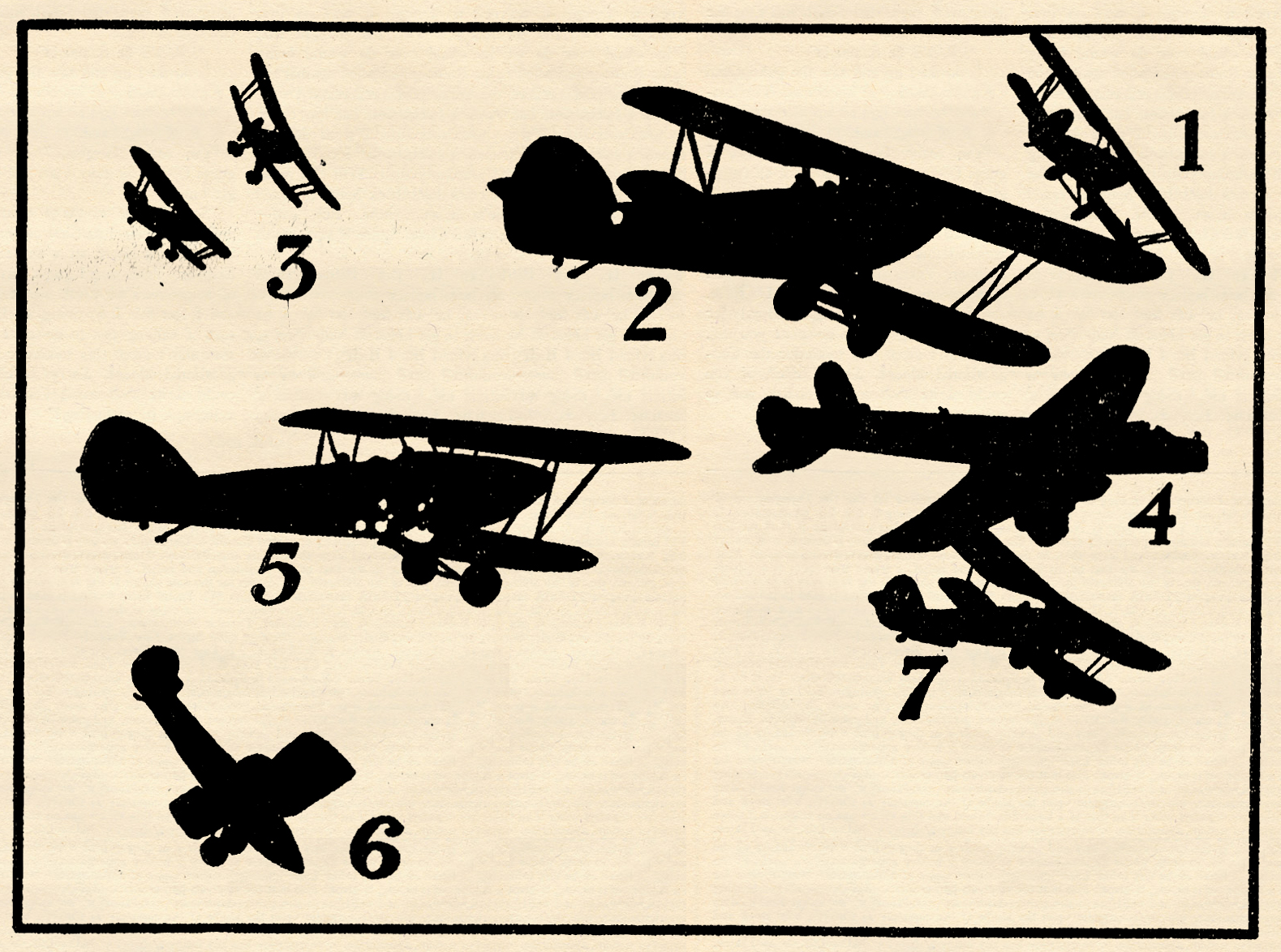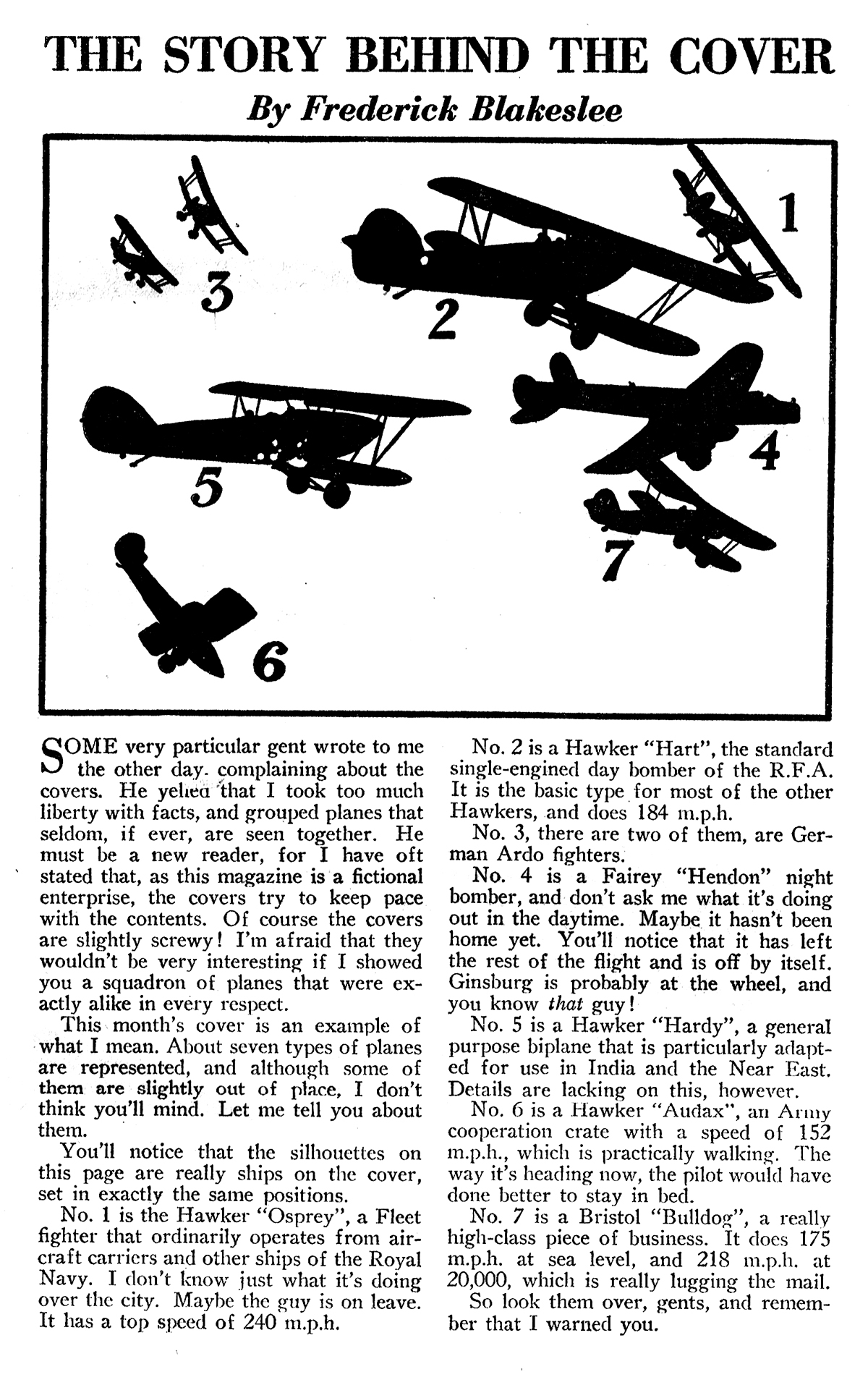Dare-Devil Aces, February 1937 by Frederick Blakeslee
Frederick Blakeslee painted all the covers for the entire run of Dare-Devil Aces. And each of those covers had a story behind it. The February 1937 Dare-Devil Aces’ cover is the first of Mr. Blakeslee’s “Planes by the Numbers” covers where he has so many planes on the cover, he explains which plane is what with a legend on the story behind the cover page. He featured the Hawker Fury on the previous issue—on this issue he featured the other planes in the Hawker line of fighters.
 SOME very particular gent wrote to me the other day. complaining about the covers. He yelled that I took too much liberty with facts, and grouped planes that seldom, if ever, are seen together. He must be a new reader, for I have oft stated that, as this magazine is a fictional enterprise, the covers try to keep pace with the contents. Of course the covers are slightly screwy! I’m afraid that they wouldn’t be very interesting if I showed you a squadron of planes that were exactly alike in every respect.
SOME very particular gent wrote to me the other day. complaining about the covers. He yelled that I took too much liberty with facts, and grouped planes that seldom, if ever, are seen together. He must be a new reader, for I have oft stated that, as this magazine is a fictional enterprise, the covers try to keep pace with the contents. Of course the covers are slightly screwy! I’m afraid that they wouldn’t be very interesting if I showed you a squadron of planes that were exactly alike in every respect.
This month’s cover is an example of what I mean. About seven types of planes are represented, and although some of them are slightly out of place, I don’t think you’ll mind. Let me tell you about them.
You’ll notice that the silhouettes on this page are really ships on the cover, set in exactly the same positions.

No. 1 is the Hawker “Osprey”, a Fleet fighter that ordinarily operates from aircraft carriers and other ships of the Royal Navy. I don’t know just what it’s doing over the city. Maybe the guy is on leave. It has a top speed of 240 m.p.h.
No. 2 is a Hawker “Hart”, the standard single-engined day bomber of the R.F.A. It is the basic type for most of the other Hawkers, and does 184 m.p.h.
No. 3, there are two of them, are German Ardo fighters.
No. 4 is a Fairey “Hendon” night bomber, and don’t ask me what it’s doing out in the daytime. Maybe it hasn’t been home yet. You’ll notice that it has left the rest of the flight and is off by itself. Ginsburg is probably at the wheel, and you know that guy!
No. 5 is a Hawker “Hardy”, a general purpose biplane that is particularly adapted for use in India and the Near East. Details are lacking on this, however.
No. 6 is a Hawker “Audax”, an Army cooperation crate with a speed of 152 m.p.h., which is practically walking. The way it’s heading now, the pilot would have done better to stay in bed.
No. 7 is a Bristol “Bulldog”, a really high-class piece of business. It does 175 m.p.h. at sea level, and 218 m.p.h. at 20,000, which is really lugging the mail.
So look them over, gents, and remember that I warned you.

“The Story Behind The Cover” by Frederick Blakeslee
(February 1937, Dare-Devil Aces)




